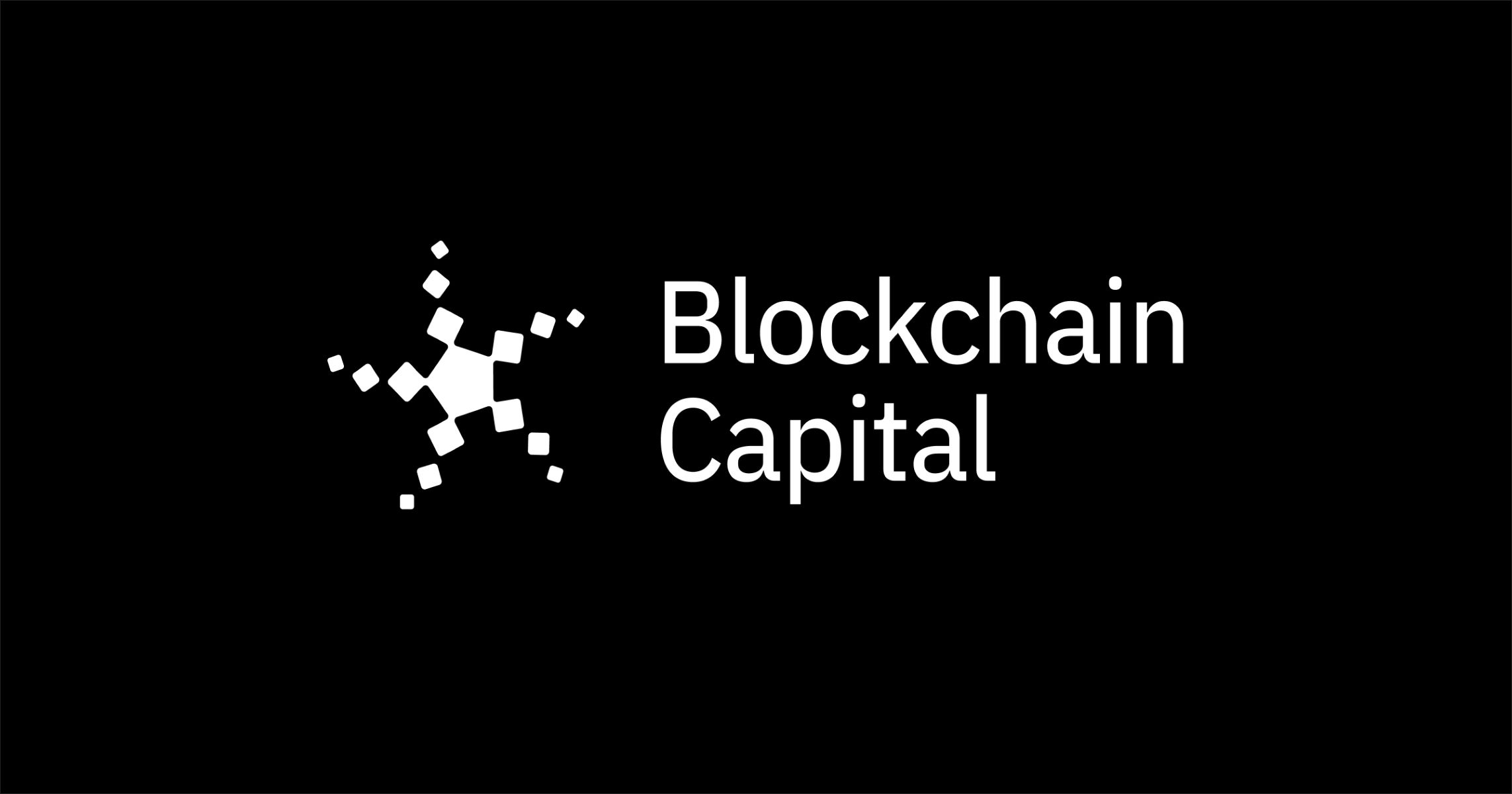Introduction
Welcome to the world of capital markets, where trading, investment, and financial transactions take place on a massive scale. In recent years, there has been an increasing buzz surrounding a groundbreaking technology called blockchain. Blockchain has the potential to revolutionize various industries, and capital markets are no exception.
But what exactly is blockchain? In simple terms, it is a decentralized digital ledger that records transactions across multiple computers. This technology enables transparency, security, and efficiency in the exchange of assets, making it an intriguing proposition for capital market participants.
In this article, we will explore the ways in which blockchain can benefit capital markets. We will delve into its potential applications in trading and settlement, regulatory compliance, trade finance, and asset management. Additionally, we will discuss the challenges and considerations involved in implementing blockchain in the capital markets space.
By the end of this article, you will have a clear understanding of how blockchain can reshape and improve capital markets, bringing forth a new era of efficiency, trust, and innovation.
What is blockchain?
Blockchain is an innovative technology that facilitates secure and transparent digital transactions. It operates as a decentralized and distributed ledger system, where information is stored across a network of computers. Each transaction is recorded in a “block” and linked to the previous block, forming a chain of data. This sequential and immutable nature of the blockchain ensures the integrity and reliability of the recorded information.
One of the key features of blockchain is its ability to operate without a central authority or intermediary. Transactions on the blockchain are validated through a consensus mechanism, which can be achieved through various methods such as proof of work or proof of stake. This decentralized nature eliminates the need for intermediaries like banks or clearinghouses, reducing costs and increasing efficiency.
The transparency of blockchain is another crucial aspect. Every transaction recorded on the blockchain is visible to all participants within the network. This transparency promotes trust and accountability, as it becomes extremely difficult to manipulate or alter the information stored on the blockchain.
Furthermore, blockchain ensures a high level of security. The data within each block is encrypted and linked to the previous block through a unique cryptographic hash. This cryptographic feature makes it extremely difficult for unauthorized parties to tamper with or alter the information stored on the blockchain.
The adoption of blockchain technology has expanded beyond its initial use in cryptocurrencies like Bitcoin. It has gained recognition and acceptance in various sectors, including finance, supply chain management, healthcare, and more. The potential applications of blockchain are vast and can bring about significant changes in how industries operate.
In summary, blockchain is a decentralized and transparent technology that enables secure and efficient digital transactions. Its features, such as decentralization, transparency, and security, make it a valuable tool for reshaping industries, including capital markets.
Understanding capital markets
Before exploring the potential impact of blockchain on capital markets, it is essential to have a solid understanding of what capital markets entail. Capital markets are financial markets where individuals, institutions, and governments trade financial securities such as stocks, bonds, and derivatives.
The primary function of capital markets is to facilitate the allocation of capital by connecting those who have excess funds with those who need capital for various purposes. These markets serve as a crucial mechanism for raising funds, investing in businesses, and managing risk.
There are two main types of capital markets: primary markets and secondary markets. In primary markets, new securities are issued and sold directly to investors. This process is typically carried out through initial public offerings (IPOs) or private placements. The funds raised in primary markets are used by companies and organizations to finance their operations, invest in growth, or undertake other strategic initiatives.
Secondary markets, on the other hand, involve the trading of existing securities between investors. These markets provide liquidity to investors, allowing them to buy and sell securities freely. The most well-known example of a secondary market is the stock market, where shares of publicly traded companies are bought and sold.
Capital markets are complex and dynamic in nature, influenced by various factors such as economic conditions, investor sentiment, regulatory frameworks, and technological advancements. They play a vital role in the overall functioning and stability of the financial system, as well as the broader economy.
Now that we have a basic understanding of capital markets, we can delve into how blockchain technology can potentially reshape and enhance various aspects of this intricate ecosystem. From trading and settlement to regulatory compliance and trade finance, blockchain has the potential to drive significant improvements in efficiency, transparency, and security across capital markets.
How can blockchain benefit capital markets?
Blockchain technology carries immense potential to transform capital markets and bring about a host of benefits. Let’s explore some of the ways in which blockchain can positively impact this financial ecosystem:
1. Enhanced efficiency: Blockchain has the ability to streamline and automate several processes in capital markets, reducing manual interventions and improving overall operational efficiency. With blockchain, transactions can be executed in a matter of seconds, eliminating the need for lengthy settlement times and reducing counterparty risks.
2. Increased transparency: Transparency is a crucial aspect of capital markets, and blockchain can significantly enhance it. With a shared and immutable ledger, all participants within the network have access to the same information, providing greater visibility into transactions, ownership, and asset movements. This transparency can help instill trust among market participants and regulators.
3. Enhanced security: Blockchain’s cryptographic features provide robust security against fraud, manipulation, and unauthorized access. The decentralized nature of blockchain reduces the risk of a single point of failure, making it extremely difficult for malicious actors to compromise the system. This heightened security can contribute to the overall integrity of capital markets.
4. Cost savings: By eliminating intermediaries and automating processes, blockchain has the potential to bring significant cost savings to capital markets. The removal of intermediaries reduces transaction fees, while streamlined processes minimize operational costs. Additionally, smart contracts, which are self-executing contracts built on the blockchain, can automate tasks and reduce administrative expenses.
5. Improved liquidity: Traditional capital markets often face liquidity challenges, making it difficult for investors to buy or sell securities. Blockchain-based platforms can enhance liquidity by enabling peer-to-peer trading and fractional ownership of assets. This can open up investment opportunities for a wider range of investors and increase market liquidity.
6. Simplified compliance: The regulatory landscape in capital markets can be complex and cumbersome. Blockchain has the potential to simplify compliance processes by providing real-time visibility into transactions and ensuring that participants adhere to regulatory requirements. This can reduce compliance costs and facilitate smoother regulatory oversight.
These are just a few examples of how blockchain can benefit capital markets. As the technology continues to evolve, it is expected to unlock further potential and revolutionize the way transactions are conducted, assets are traded, and trust is established in capital markets.
Blockchain in trading and settlement
One of the key areas in capital markets where blockchain technology can make a significant impact is in trading and settlement. Traditionally, the process of buying and selling financial assets involves multiple intermediaries, manual processes, and lengthy settlement times. Blockchain has the potential to revolutionize this process by introducing transparency, efficiency, and cost savings.
With blockchain, trades can be executed directly between buyers and sellers without the need for intermediaries, such as brokers or clearinghouses. This peer-to-peer trading can eliminate delays, reduce costs, and improve liquidity in the market. Additionally, blockchain-based smart contracts can automate trade execution and settlement, ensuring that transactions are completed in a secure and timely manner.
The use of blockchain technology in trading and settlement provides several benefits:
1. Real-time settlement: Blockchain enables near-instant settlement of trades, eliminating the need for lengthy waiting periods. This real-time settlement reduces counterparty risk and frees up capital, enabling investors to reinvest funds more quickly.
2. Reduced costs: By eliminating intermediaries, blockchain reduces transaction fees and operational costs associated with trading and settlement. This cost savings can make capital markets more accessible and attractive to a broader range of investors.
3. Increased transparency: Blockchain’s transparent nature ensures that all participants within the network have access to the same information. This transparency enables greater visibility into the trading process, ensuring fairness and reducing the possibility of market manipulation.
4. Improved security: Blockchain’s cryptographic features make it highly secure against fraud and unauthorized access. Each transaction recorded on the blockchain is encrypted and linked to the previous transaction, making it virtually impossible for hackers to alter or tamper with the data.
5. Enhanced auditability: The transparent and immutable nature of blockchain makes it easy to track and trace transactions. This feature simplifies the auditing process and enhances regulatory compliance.
6. Global accessibility: Blockchain is not constrained by geographical boundaries, allowing investors from all over the world to participate in trading and settlement. This global accessibility can increase market liquidity and create more diverse investment opportunities.
The adoption of blockchain in trading and settlement is still in its early stages, and there are several challenges to overcome, such as scalability and regulatory considerations. However, the potential benefits offered by blockchain technology in this area are undeniable, and industry players are actively exploring its implementation to transform how trades are executed and settled in capital markets.
Blockchain in regulatory compliance
Regulatory compliance is a crucial aspect of capital markets, aimed at ensuring fairness, transparency, and investor protection. However, the current regulatory landscape is often complex, cumbersome, and prone to manual errors. Blockchain technology offers a promising solution to improve regulatory compliance in capital markets by enhancing transparency, automation, and data integrity.
Blockchain’s transparent and immutable nature makes it an ideal tool for regulatory compliance. Transactions recorded on the blockchain are visible to all participants within the network, providing regulators with real-time visibility into market activities. This transparency can help detect and prevent fraudulent activities, market abuse, and insider trading.
Furthermore, blockchain-based platforms can automate compliance processes through the use of smart contracts. Smart contracts are self-executing contracts coded on the blockchain, which automatically enforce predefined rules and conditions. This automation reduces the likelihood of human error and ensures that transactions adhere to regulatory requirements.
Blockchain can also facilitate Know Your Customer (KYC) and Anti-Money Laundering (AML) processes. By storing customer information on the blockchain, financial institutions can streamline the KYC process and create a more secure and verifiable customer identification system. Similarly, blockchain can track the flow of funds and detect suspicious transactions, enhancing AML efforts.
Another advantage of blockchain in regulatory compliance is the ability to create tamper-proof audit trails. Each transaction recorded on the blockchain is linked to the previous transaction, forming an unbroken chain of data. This auditable trail simplifies the auditing process and enhances the ability of regulators to conduct investigations or audits efficiently.
Blockchain technology also has the potential to facilitate regulatory reporting. Traditional regulatory reporting involves manually compiling and submitting data to regulatory authorities, which can be time-consuming and prone to errors. With blockchain, data can be securely stored on the ledger in real-time, allowing for automated and accurate reporting.
Despite the benefits, implementing blockchain in regulatory compliance does come with challenges. Interoperability with existing systems, data privacy concerns, and regulatory acceptance are among the key hurdles that need to be addressed. Additionally, collaboration between industry participants, regulators, and technology providers is essential to establish common standards and frameworks.
Overall, blockchain technology has the potential to significantly improve regulatory compliance in capital markets. By enhancing transparency, automation, and data integrity, blockchain can create a more efficient, secure, and trustworthy regulatory environment.
Blockchain in trade finance
Trade finance is a critical component of global commerce, facilitating international trade by providing financing and risk mitigation solutions. However, the traditional trade finance process is often paper-intensive, time-consuming, and prone to manual errors. Blockchain technology has the potential to revolutionize trade finance by introducing transparency, efficiency, and trust to the process.
Blockchain-based platforms can streamline and automate various trade finance activities, including letter of credit (LC) issuance, invoice financing, and supply chain financing. By storing trade-related data on the blockchain, participants can have real-time visibility into the status of transactions and documentation, reducing delays and enabling faster decision-making.
One of the key advantages of blockchain in trade finance is the elimination of paperwork. Trade documents, such as purchase orders, bills of lading, and certificates of origin, can be digitized and stored on the blockchain. This digitization reduces the reliance on physical documents, minimizes the risk of document fraud, and speeds up the verification process.
Smart contracts play a crucial role in blockchain-enabled trade finance. These self-executing contracts can automate payment settlements, trigger financing disbursements, and enforce contractual terms and conditions. Smart contracts provide security and efficiency by eliminating manual interventions and reducing the risk of non-compliance.
Blockchain technology also improves trust and reduces the risk of fraud in trade finance. Each transaction recorded on the blockchain is visible to all participants, creating a transparent and auditable trail. This transparency helps combat trade-based money laundering, double financing, and other fraudulent activities. Additionally, the use of cryptography ensures the security and integrity of trade finance transactions.
Blockchain can also enhance access to trade finance, particularly for small and medium-sized enterprises (SMEs). Traditionally, SMEs face challenges in obtaining financing due to their limited credit history and collateral. With blockchain-enabled trade finance platforms, SMEs can showcase their transaction history and track records, making them more creditworthy in the eyes of lenders.
Despite the promising potential of blockchain in trade finance, there are obstacles to overcome. Interoperability with legacy systems, regulatory compliance, and industry-wide adoption are among the key challenges. Collaboration between financial institutions, governments, and technology providers is crucial to establishing common standards and creating a robust blockchain ecosystem for trade finance.
In summary, blockchain technology can bring significant improvements to the trade finance process. By increasing transparency, automating processes, reducing paperwork, and enhancing trust, blockchain has the potential to streamline trade finance, improve access to financing, and drive global trade growth.
Blockchain in asset management
Asset management is a critical function in the financial industry, involving the management and administration of various types of investments and assets. Blockchain technology holds significant promise in transforming asset management by bringing transparency, efficiency, and security to the process.
One area where blockchain can greatly benefit asset management is in the area of transparency. Traditionally, asset managers often rely on multiple intermediaries to verify and validate ownership and transfer of assets. With blockchain, assets can be tokenized and represented as digital assets on the blockchain. These digital tokens provide a transparent view of ownership, enabling asset managers to easily track and validate the ownership and movement of assets in real-time.
The use of blockchain in asset management also introduces efficiency gains. The automation of trade settlements and reconciliation processes through smart contracts can significantly reduce manual errors and delays. This automation streamlines administrative tasks and frees up time for asset managers to focus on making informed investment decisions.
Furthermore, blockchain technology enhances security in asset management. The transparent and immutable nature of the blockchain ensures that all transactions and changes to asset ownership are recorded and cannot be altered. This reduces the risk of fraud and unauthorized activity, providing trust and confidence to investors and regulators.
Another benefit of blockchain in asset management is the potential for increased liquidity. Blockchain technologies enable fractional ownership of assets, allowing for the creation and trading of digital tokens representing partial ownership. This fractional ownership can unlock greater liquidity in traditionally illiquid assets such as real estate or private equity, giving investors the ability to buy or sell smaller portions of assets.
Additinally, blockchain can enhance the accessibility of asset management for a wider range of investors. With lower barriers to entry, such as lower transaction costs and fractional ownership opportunities, blockchain opens up asset management to retail investors who previously may have been limited to certain investment opportunities.
Despite the potential benefits, there are challenges for implementing blockchain in asset management. These include regulatory considerations, interoperability with existing systems, and the need for industry-wide standards and collaboration. However, as the adoption and acceptance of blockchain technologies continue to grow, the potential for transformation in asset management is significant.
In summary, blockchain technology has the potential to revolutionize asset management by introducing transparency, efficiency, security, and increased liquidity. By leveraging blockchain, asset managers can streamline processes, reduce costs, and provide investors with new and innovative investment opportunities.
Challenges and considerations for implementing blockchain in capital markets
While the potential benefits of blockchain in capital markets are significant, there are several challenges and considerations that need to be addressed before widespread implementation can occur. These challenges include:
1. Scalability: Blockchain technology still faces scalability limitations in terms of transaction processing speed and capacity. The current infrastructure may not be able to handle the volume and speed required in capital markets, which are characterized by high-frequency trading and large transaction volumes. Scaling solutions such as off-chain transactions and layer-two protocols are being explored to address these scalability challenges.
2. Interoperability: Interoperability between different blockchain platforms and legacy systems is a crucial consideration. Capital markets typically operate on a variety of systems and networks, and integrating blockchain with these legacy systems can pose technical challenges. Establishing standards and protocols that enable seamless interoperability is essential for successful implementation.
3. Regulatory considerations: The regulatory landscape surrounding blockchain in capital markets is still evolving. Regulations governing securities, data privacy, and anti-money laundering need to be adaptively applied to blockchain-based solutions. Regulatory clarity and collaboration between industry stakeholders and regulators are necessary to ensure compliance and protect investors.
4. Data privacy and security: While blockchain provides trust and immutability, it also raises concerns regarding data privacy. Capital market participants must carefully consider the storage and sharing of sensitive data on the blockchain. Privacy-preserving technologies such as zero-knowledge proofs and selective disclosure can be explored to address these concerns and maintain data confidentiality.
5. Cultural and organizational change: Implementing blockchain in capital markets requires a cultural shift and organizational change for market participants. Embracing blockchain technology requires a willingness to rethink and redesign existing processes, which may involve resistance and disruption. Education, training, and change management efforts are necessary to ensure successful adoption.
6. Cost considerations: While blockchain has the potential to reduce costs in the long term, there may be upfront investment costs associated with implementing and integrating blockchain solutions. This includes developing blockchain infrastructure, ensuring data integrity, and training staff. Careful cost-benefit analysis and business case evaluation are necessary to justify the investment in blockchain technology.
7. Network governance: The decentralized nature of blockchain raises questions about network governance and decision-making processes. Consensus mechanisms, network upgrades, and decision-making structures need to be established to ensure the smooth operation and evolution of the blockchain network in capital markets.
Addressing these challenges and considerations will require collaboration between market participants, technology providers, regulators, and other stakeholders. By working together to overcome these barriers, the potential of blockchain in transforming capital markets can be fully realized.
Case studies: Companies using blockchain in capital markets
Several companies and organizations have recognized the potential of blockchain technology in improving efficiency, transparency, and security in capital markets. Here are a few notable case studies:
1. Nasdaq: Nasdaq, one of the world’s largest stock exchanges, has been actively exploring blockchain technology. In 2015, Nasdaq launched the Nasdaq Linq blockchain-powered platform, which enables private companies to issue and manage shares. Nasdaq has also collaborated with other industry players to develop blockchain solutions for pre-IPO trading, proxy voting, and supply chain management.
2. Intercontinental Exchange (ICE): ICE, the parent company of the New York Stock Exchange (NYSE), has partnered with blockchain startup Blockstream to develop the Liquid Securities platform. This platform aims to tokenize and trade private securities, making them more accessible and efficient. ICE has also invested in various blockchain-focused companies, signaling its commitment to blockchain innovation.
3. Depository Trust & Clearing Corporation (DTCC): DTCC, a prominent post-trade services provider, has been actively exploring blockchain technology to enhance its clearing and settlement processes. DTCC collaborated with IBM and Axoni to develop a blockchain-based solution for credit derivatives trade processing. This project demonstrated the potential to reduce costs and eliminate inefficiencies in the credit derivatives market.
4. Banco Santander: Banco Santander, a leading global bank, has been using blockchain technology for several initiatives in capital markets. Santander launched a blockchain-powered platform called Santander One Pay FX, which facilitates instantaneous cross-border payments for its customers. Additionally, the bank issued the world’s first end-to-end blockchain bond in 2019, demonstrating the viability of blockchain for issuing and managing debt securities.
5. Australian Securities Exchange (ASX): ASX is in the process of replacing its existing equities clearing and settlement system with a blockchain-based solution developed by Digital Asset Holdings. The new system, known as the CHESS replacement project, aims to enhance efficiency, reduce costs, and improve user experience in the Australian capital markets.
These case studies highlight the diverse applications of blockchain technology in capital markets. From issuing and trading securities to improving post-trade processes, companies and organizations are actively leveraging blockchain to drive innovation and transform the way capital markets operate.
While these initiatives are promising, it is important to note that they are still in various stages of development and deployment. The outcomes and scalability of these projects will help shape the future of blockchain in capital markets, paving the way for broader adoption and industry-wide transformation.
Conclusion
Blockchain technology has the potential to revolutionize capital markets by introducing transparency, efficiency, and security to various processes. From trading and settlement to regulatory compliance, trade finance, and asset management, blockchain offers significant benefits that can reshape the landscape of capital markets.
By leveraging blockchain, capital markets can experience enhanced efficiency, reduced costs, improved liquidity, and increased accessibility. Real-time settlement, streamlined compliance processes, and simplified trade finance are just a few examples of the transformative potential of blockchain technology.
However, there are challenges and considerations that need to be addressed for successful implementation. Scalability, interoperability, regulatory compliance, data privacy, and organizational change are among the factors that require collaboration and innovation from industry participants, regulators, and technology providers.
Despite these challenges, numerous companies and organizations are already exploring blockchain in capital markets. Nasdaq, ICE, DTCC, Banco Santander, and ASX are just a few examples of entities that have embarked on blockchain initiatives to drive innovation and improve efficiency in various aspects of capital markets.
The future of blockchain in capital markets looks promising, but ongoing development, collaboration, and regulatory support will be crucial for realizing its full potential. As blockchain technology continues to evolve and mature, the benefits it offers to capital markets can be fully harnessed, bringing forth a new era of transparency, efficiency, and trust in the financial ecosystem.

























